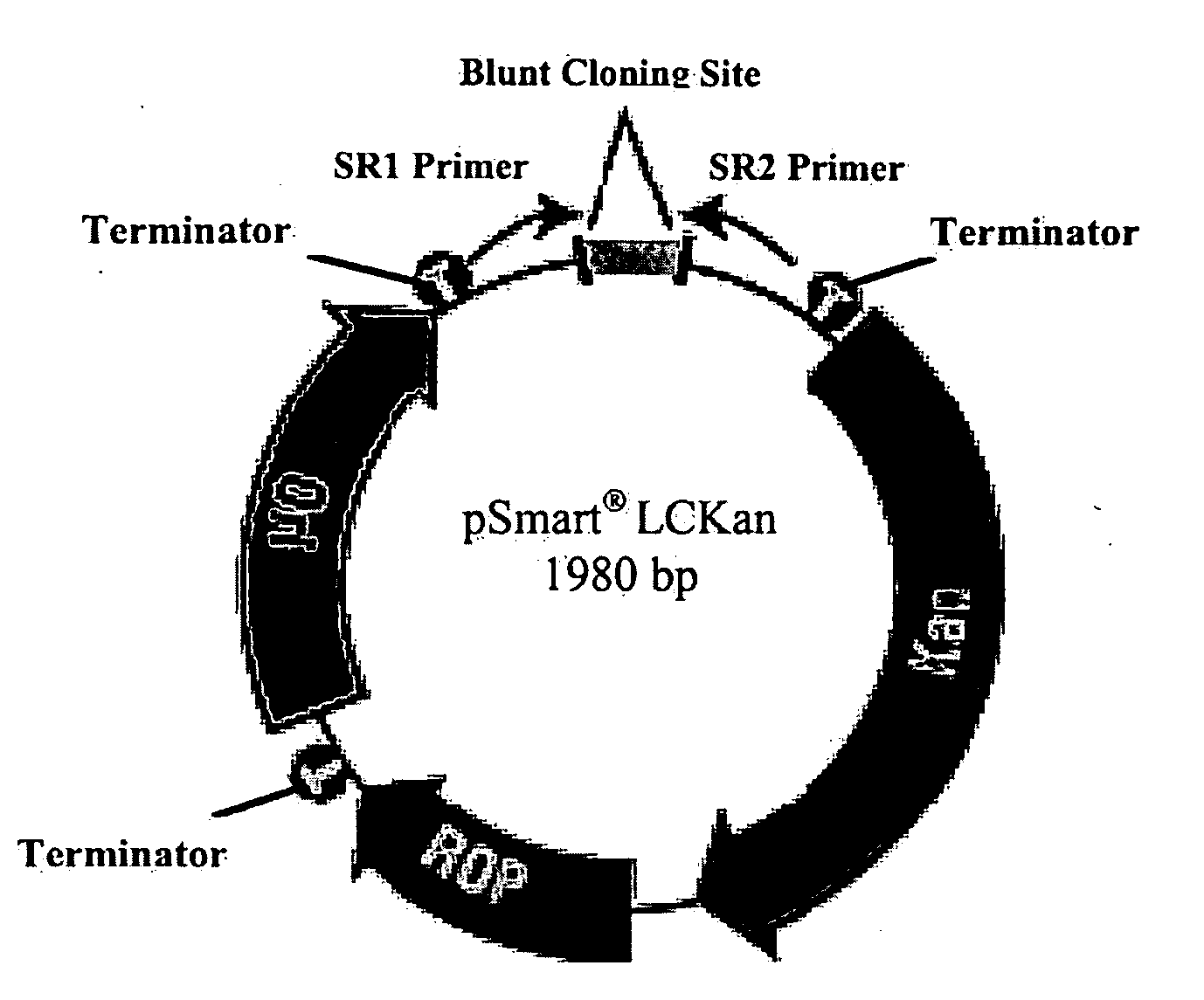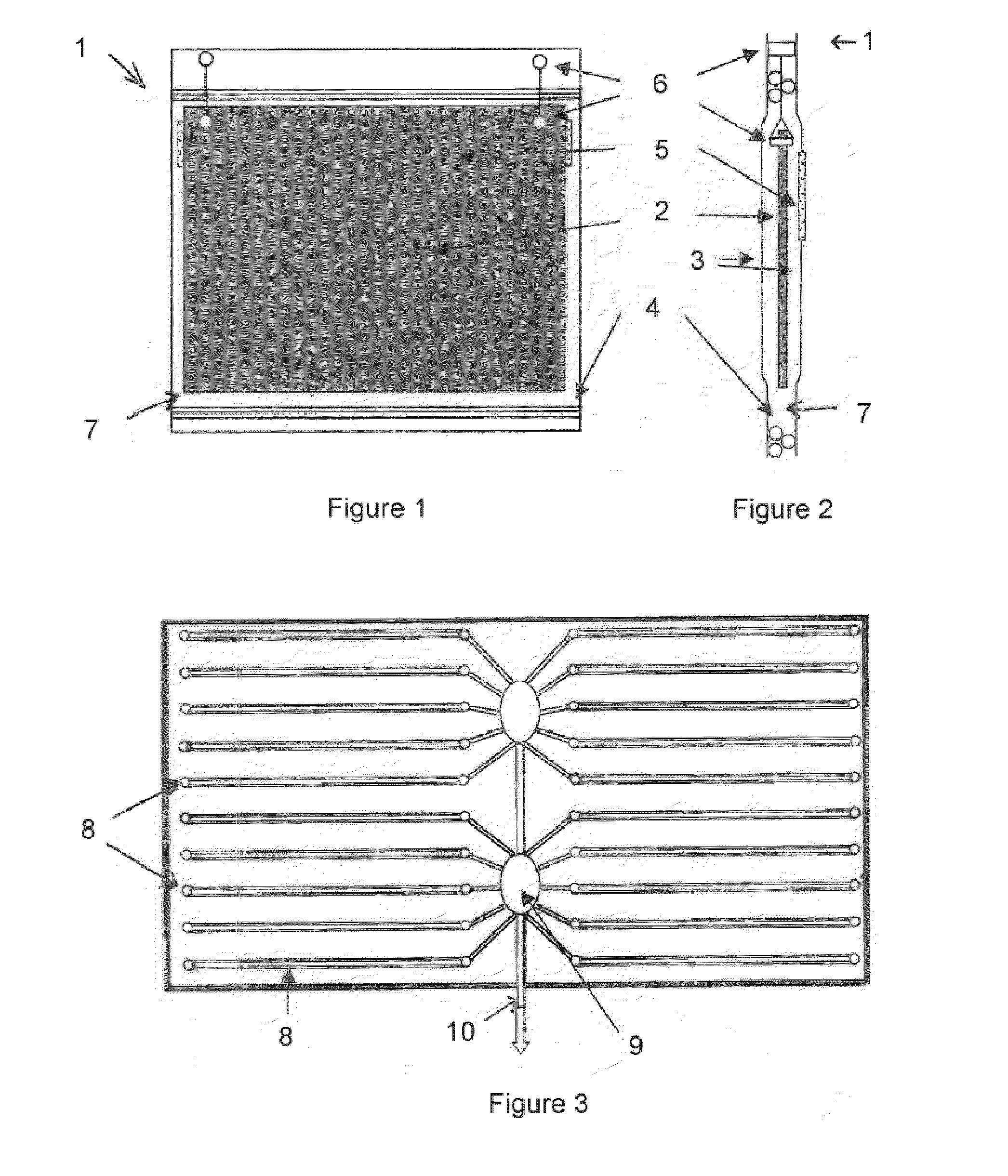Transgenic photosynthetic microorganisms and photobioreactor
- Summary
- Abstract
- Description
- Claims
- Application Information
AI Technical Summary
Benefits of technology
Problems solved by technology
Method used
Image
Examples
example 1
Solid Phase Photobioreactor
[0208]A static prototype device was constructed composed of a 2 mil polyethylene barrier layer with a Ziploc® resealable closure. A 60 sq. cm breathable panel was incorporated into one surface, and a 225 sq. cm woven cotton fabric cultivation support surface was placed inside. The device was sterilized by treatment with 70% volume aqueous ethanol followed by drying of the device at 5° C. with a stream of sterile filtered air. 30 ml of sterile BG-11 culture media was absorbed onto the cultivation support followed by inoculation of the growing surface with a pre-culture of Synechococcus elongates PCC 7942. using an aerosol applicator. The preculture was grown in BG-11 media at 26° C. for 2 days prior to inoculation. The photobioreactor was placed in an incubation chamber maintained at 33° C. and illuminated at 300 microeinsteins with cool white fluorescent lamps. After 2 days, the reactor displayed active growth of organisms and was allowed to continue growt...
example 2
Production of Sucrose by Photosynthetic Microorganisms
[0209]The following is a prophetic example to illustrate a method for production of sucrose by photosynthetic microorganism in combination with a photobioreactor. At least one photobioreactor, for example a photobioreactor of the current invention such as described in Example 1 or Example 3, may be run for approximately 4-7 days with either Synechocystis sp. PCC6803. or engineered Synechocystis sp. at a temperature range of between about 15 and 40° C., under illumination of between about 60 and 300 microeinsteins, and carbon dioxide concentration of between about 0.2 and 15 volume %. Following the initial cultivation period the growth surface may be treated with an aqueous salt solution in the concentration range of between about 0.01 and 1.5 M, more preferably between about 0.2 and 0.9 M, using an aerosol spray. The cultivation may be allowed to continue for approximately an additional one to two days to allow sucrose production...
example 3
Solid Cultivation Support Coated with an Absorbent Polymer
[0210]The growth surface of a static photobioreactor of the type described in Example 1 was prepared by dip coating the sterile dry surface of the material with a heated solution of sterile 1.5 weight percent agar dispersed in BG-11 culture media. The coated growth surface was allowed to cool and harden upon which the surface was inserted into a sterilized protective barrier to form a photobioreactor device and inoculated with Synechococcus sp. grown in preculture as described in Example 1. Cultivation and harvesting were performed essentially as described in Example 1.
PUM
| Property | Measurement | Unit |
|---|---|---|
| Temperature | aaaaa | aaaaa |
| Fraction | aaaaa | aaaaa |
| Mass | aaaaa | aaaaa |
Abstract
Description
Claims
Application Information
 Login to View More
Login to View More - R&D Engineer
- R&D Manager
- IP Professional
- Industry Leading Data Capabilities
- Powerful AI technology
- Patent DNA Extraction
Browse by: Latest US Patents, China's latest patents, Technical Efficacy Thesaurus, Application Domain, Technology Topic, Popular Technical Reports.
© 2024 PatSnap. All rights reserved.Legal|Privacy policy|Modern Slavery Act Transparency Statement|Sitemap|About US| Contact US: help@patsnap.com










